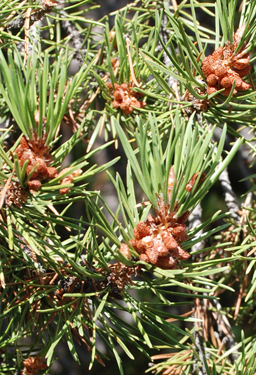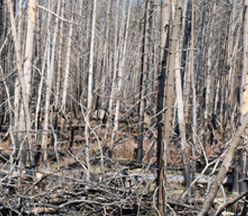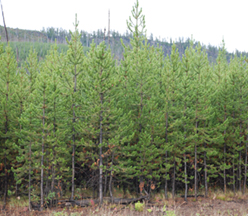Forest management, including timber harvesting, is essential to healthy forests. Saratoga Forest Management through its program of Silvicultural Applications and Best Management Practices can produce a rate of forest regrowth that is up to four times the rate of natural regeneration.
- All of our timber management programs are carried out in strict compliance with best management practices (BMP’s) which protects and enhances our watersheds, timberlands and wildlife habitats.
- We provide, through direct payments to federal, state and municipal agencies, much-needed revenue for those agencies to treat ecosystems devastated by fire, pathogens, or invasive species.
- We pay private land owners for their timber and help with their timber management programs.

What Is Forest Management?
“Keep close to Nature’s heart… and break clear away, once in a while, and climb a mountain or spend a week in the woods.”
– John Muir
Wyoming and Colorado forests directly affect the lives of millions of people in the Western United States. These forests protect the headwaters of the major rivers supplying life sustaining water to seven states including the most heavily populated areas of Arizona, Colorado and California. They are the critical habitat of the largest remaining populations of some of America’s most majestic wildlife: Elk, Bear, Bald Eagles, Mountain Lion, Lynx, Otters and others almost too numerous to mention. Finally, the forests are a refuge for millions of backpackers, mountain bikers, campers, hunters, fishermen, and day trippers whose spirits are rejuvenated by Nature’s splendor.

Currently more that 4 million acres of national forest in Wyoming and Colorado, including almost all of the magnificent lodgepole pine forests , have been killed and left standing after an unprecedented outbreak of forest destroying insects. The impact of the devastation can now be described in a series of superlatives: largest, most frequent and costliest mega fires in history, most devastating flooding from rapid snow melt in history, unprecedented disruption of elk and other large animal migratory patterns and finally, sadly, the greatest destruction of our national forests that the country has ever experienced.
Active forest management is one of the most effective tools of reversing some of the damage to our forests and preventing similar damage to currently stressed forests that have not yet reached a tipping point leading to similar uncontrolled degradation. Effective forest management varies by the forest species and other factors, but in the lodgepole pine forest around Saratoga, effective forest management consists of harvesting dead lodgepole pines and thinning groves of engelmann spruce. When dead lodgepoles are harvested, sunlight is able to reach the seedlings on the forest floor and begin the forest regeneration process (similar to what happens with the natural cycle of regeneration after forest fires). Saratoga Forest Management’s harvesting efforts are leading to the regrowth of more than 1 million new saplings annually.
Lumber Protects the Environment
Since the very foundation of America, wood has been our most widely used building material. Today, a growing awareness of environmental sustainability, and life-cycle benefits of lumber recognizes lumber as a Green building material and has created a demand for lumber to be used even more broadly. Wood has the advantage of:
- Wood is a renewable resource that with sustainable forest management and harvesting practices will be available indefinitely.
- Forests clean the air by trapping greenhouse gases. Lumber from these trees to creates a “carbon sink” that effectively removes the carbon from the environment while in use rather than returning the carbon to the environment when a dead tree decays.
- Lumber requires less energy to produce than competing fossil fuel-intensive alternatives such as concrete or steel.
- Sustainable forest management can produce stronger, healthier forests that protects natural habitats and purifies drinking water for wildlife and U.S. municipal water systems
URGENT TREE REMOVAL
Private land owners and timber managers in Colorado and Wyoming, are confronted with acres of dead and infected tree stands and forests. Once these forests have become infected the infestations are generally best treated through a program of urgent tree removal.
For lodgepole pine forests in particular, the benefits of harvesting the trees is dramatic; lodgepole is a relatively short-lived species – about 100 years – and when the forest floor receives sunshine, there are plenty of lodgepole seeds that will sprout immediately. In addition, harvesting the timber while it still retains commercial value enables the landowner to manage the forest in an economically viable manner.
Our program is designed for Colorado and Wyoming landowners and managers with 50 or more acres of infected forests.
If you are interested in discussing urgent tree removal on your property, please contact us at 307.326.3082.



